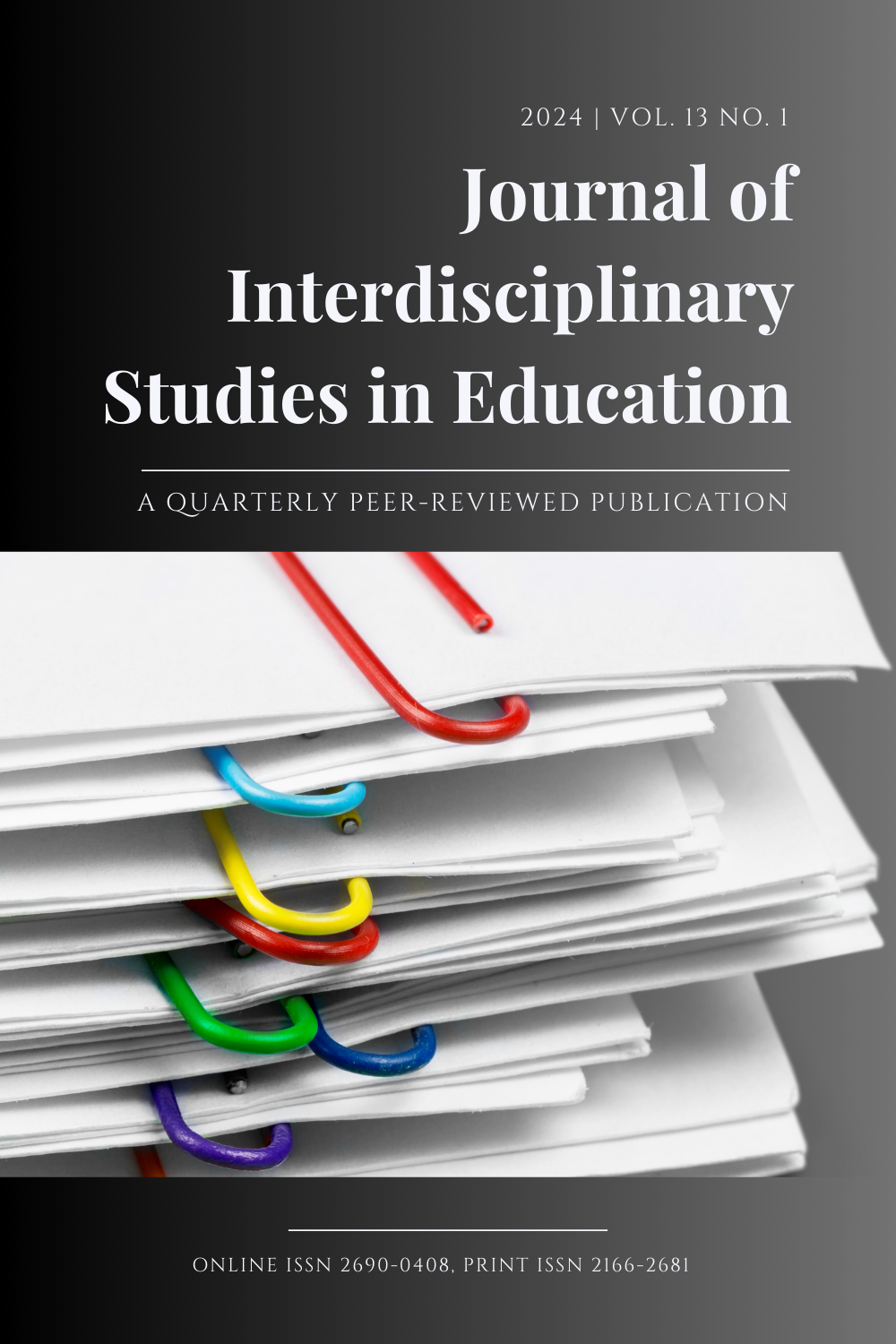Development of an EMI Course with the Integration of Innovative Methods
Effects on Students’ Confidence, Knowledge, and Skills
DOI:
https://doi.org/10.32674/jise.v13i1.6307Keywords:
EMI, PBL, COIL, active learning, curriculum designAbstract
While various innovative pedagogical methods have been proven effective in facilitating the development of students’ English language skills under different contexts, this study explores the implementation of several innovative methods into one EMI course, which includes Collaborative Online International Learning (COIL), Content Language Integrated Learning (CLIL), Problem Posing Education (PPE), and Project Based Learning (PBL). Deliberate considerations were made to the choice and implementation of the innovative methods: using COIL to stimulate motivation; CLIL and PPE to promote content learning (input); and PBL to facilitate content-integrated learning outcome (output). The effects of the course implementation were assessed by evaluating the course participants’ confidence, knowledge, and skills related to the use of English for communicative purposes. Data was gathered using pre- and post-course questionnaires containing self-evaluated quantitative and open-ended qualitative questions. Based on the results from the 24 participants in the course, it was found that the course was highly effective in promoting the development of the participants’ confidence, knowledge, and skills with large effect sizes. In addition, from students’ feedback on the course, their expectations for the course were met, and the course objectives were achieved. Utilizing innovative methods strongly contributed to the positive outcomes of the course.
Downloads
References
Aksel, A., & Gürman-Kahraman, F. (2014). Video project assignments and their effectiveness on foreign language learning. Procedia-Social and Behavioral Sciences, 141, 319-324. https://doi.org/10.1016/j.sbspro.2014.05.055
Arroyo-Barrigüete, J. L., López-Sánchez, J. I., & Morales-Contreras, M. F., & Soffritti, M. (2022). The impact of English-medium instruction on university student performance. Journal of Multilingual and Multicultural Development. 1-16. 10.1080/01434632.2022.2047193.
Coyle, D. (2007). Content and language integrated learning: Towards a connected research agenda for CLIL pedagogies. International Journal of Bilingual Education and Bilingualism, 10(5), 543-562. https://doi.org/10.2167/beb459.0
Crookes, G. V. (2013). Critical ELT in action: Foundations, promises, praxis. Routledge.
Freire, P. (2000). Pedagogy of the oppressed. Continuum.
Gokcora, D. (2021). Benefits of collaborative online international learning projects. Academia Letters, 202, 1-4.
Hafner, C. A. (2014). Embedding digital literacies in English language teaching: Students' digital video projects as multimodal ensembles. TESOL Quarterly, 48(4), 655-685. https://doi.org/10.1002/tesq.138
Hino, N. (2017). The significance of EMI for the learning of EIL in higher education: Four cases from Japan. In B. Fenton-Smith, P. Humphreys, & I. Walkinshaw (Eds.), English medium instruction in higher education in Asia-Pacific (pp. 115-131). Multilingual Matters. https://doi.org/10.1007/978-3-319-51976-0_7
Huang, H. (2015). The effects of video projects on EFL learners’ language learning and motivation: An evaluative study. International Journal of Computer-Assisted Language Learning and Teaching, 5(1), 53-70. https://doi.org/10.4018/IJCALLT.2015010104
Huang, H. W. (2021). Effects of smartphone-based collaborative vlog projects on EFL learners’ speaking performance and learning engagement. Australasian Journal of Educational Technology, 37 (6), 18-40. https://doi.org/10.14742/ajet.6623
Ikeda, M. (2013). Does CLIL work for Japanese secondary school students? Potential for the ‘weak’ version of CLIL. International CLIL Research Journal, 2(1), 31-43.
Ismailov, M., & Yamamoto, Y. (2021). What makes an effective learner-centered EMI classroom in higher education? A Qualitative systematic examination of students’ perceptions using thematic synthesis approach. In ICERI2021 Proceedings (pp. 3438-3446). IATED.
Kojima, N. (2019). Pedagogical practices and learning environment needed in EMI: From the motivational perspectives of Japanese students. APU Journal of Language Research, 4.
Krajcik, J. S., & Blumenfeld, P. C. (2005). Project-based learning. In K. R. Sawyer (Ed.), The Cambridge handbook of the learning sciences (pp. 317-334). Cambridge University Press. https://doi.org/10.1017/CBO9780511816833.020
Lei, J., & Hu, G. (2014). Is English-medium instruction effective in improving Chinese undergraduate students' English competence? International Review of Applied Linguistics in Language Teaching, 52(2), 99-126. https://doi.org/10.1515/iral-2014-0005
Lin, T., & Lei, J. (2021). English-medium instruction and content learning in higher education: Effects of medium of instruction, English proficiency, and academic ability. SAGE Open, 11(4). https://doi.org/10.1177/21582440211061533
Luo, H., & Yang, C. (2022). Pedagogical benefits of Chinese-American virtual exchange: A study of student perceptions. ReCALL, 34(1), 37-50.
https://doi.org/10.1017/S0958344021000203
Mehisto, P., Marsh, D., & Frigols, M. J. (2008). Uncovering CLIL: Content and language integrated learning in bilingual and multilingual education. Macmillan Education.
Nishio, T., Fujikake, C., & Osawa, M. (2020). Language learning motivation in collaborative online international learning: An activity theory analysis. Journal of Virtual Exchange, 3, 27-47. https://doi.org/10.21827/jve.3.35780
Patton, M. Q. (2002). Qualitative research and evaluation methods (3rd ed.). Sage.
Schenker, T. (2013). The effects of a virtual exchange on students' interest in learning about culture. Foreign Language Annals, 46(3), 491-507.
Tuke, G., Kapur, S., & Ashour, K. (2021). Global citizenship cultivation through COIL-PBL model: case study of the Great Debates course. Journal of Virtual Exchange, 4, 80-91. https://doi.org/10.21827/jve.4.35815
Van Leeuwen, A., & Janssen, J. (2019). A systematic review of teacher guidance during collaborative learning in primary and secondary education. Educational Research Review, 27, 71-89. https://doi.org/10.1016/j.edurev.2019.02.001
Wallerstein, N., & Auerbach, E. (2004). Problem-posing at work: Popular educator's guide. Edmonton: Grass Roots Press.
Yamamoto, J. (2022). A Case Study of EFL Students’ Motivation toward Online Exchange Programs. Journal of Osaka Jogakuin University, 18, 51-72.
Yeh, H. C., Heng, L., & Tseng, S. S. (2020). Exploring the impact of video making on students’ writing skills. Journal of Research on Technology in Education, 1-11.
https://doi.org/10.1080/15391523.2020.1795955
Zhang, M., & Pladevall-Ballester, E. (2023). Students’ English-medium instruction motivation in three English-medium instruction courses in China. Frontiers in psychology, 13, 1077852. https://doi.org/10.3389/fpsyg.2022.1077852
Additional Files
Published
Issue
Section
License
Copyright (c) 2024 Curtis Chu, Mariko Takahashi

This work is licensed under a Creative Commons Attribution-NonCommercial-NoDerivatives 4.0 International License.







